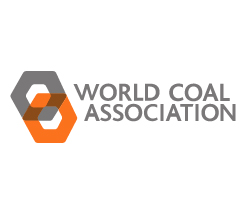Japan's Renewed Commitment to Coal

By Benjamin Sporton
March 20, 2017 - Japan is one of the largest economies in the world, and has long been a major consumer and importer of energy and a leader in energy technology development. Japan is also the world’s fifth-largest electricity user – electricity accounts for more than 36% of total energy.
Since the 2011 earthquake and the subsequent Fukushima nuclear accident, Japan has had to contend with various challenges in its energy sector: shutdown of all nuclear power plants has meant that Japan has faced increased fuel imports coupled with higher electricity prices.
Technology-driven urban lifestyles, growth of the middle class, rising incomes, and more electricity-enabled appliances and machines contribute to increased electricity demand. So it’s no wonder Japan is set to build 45 new high efficiency modern coal plants.
It is often said that coal is a fuel for the developing world, but is a good example of why that’s true. Developing economies require access to stable and affordable energy to build industrial capacity. On the other hand, developed countries require affordable and reliable electricity to continue to maintain economic competitiveness. For example, even under the now suspended Clean Power Plan in the United States, coal was forecast to provide 27% of US electricity in 2030. Australia's biggest states rely on coal for more than 90% of their electricity. In Germany coal plays a critical role in balancing the intermittency of renewables- providing about 30% of the electricity mix.
Japan knows full well that building more ultra-modern coal-fuelled power plants is the only way it can meet energy security demands and its environmental responsibility. Japan is signatory to the Paris Agreement and has pledged a 26% reduction in carbon dioxide emissions by 2030. But the country also wants to remain competitive economically, so it’s diversifying its energy mix.
The additional 45 power plants will use state of the art high efficiency, low emissions (HELE) technologies. HELE technologies are a group of technologies developed to increase the amount of energy that can be generated from a coal plant while decreasing emissions.
Japan is no stranger to HELE technologies. The Isogo Thermal Power Station, located just 6 km from central Yokohama, is a great example of how HELE can help provide the efficiencies needed while provide the base-load energy that comes from coal. The Isogo plant uses ultra-supercritical (USC) technology to generate steam up to 620 degrees C and achieves a 45% efficiency level.
The IEA has forecast an increase in new HELE coal plants in the next 25 years. According to the Agency’s latest forecast, 730GW of these highly efficient plants will be built by 2040, and that more than half of the coal fleet in developing countries will increasingly consist of HELE plants by that same period.
Recognizing this, the World Coal Association has set up the global Platform for Accelerating Coal Efficiency (PACE) to help raise the global average efficiency of coal-fuelled power plants and in effect to minimize CO2 emissions, whilst maintaining legitimate economic development and poverty alleviation efforts.
Deploying high efficiency low emission (HELE) coal-fuelled power plant is also a key step along a pathway to near zero-emissions from coal with carbon capture, use and storage (CCUS).
.jpg)
Benjamin Sporton

